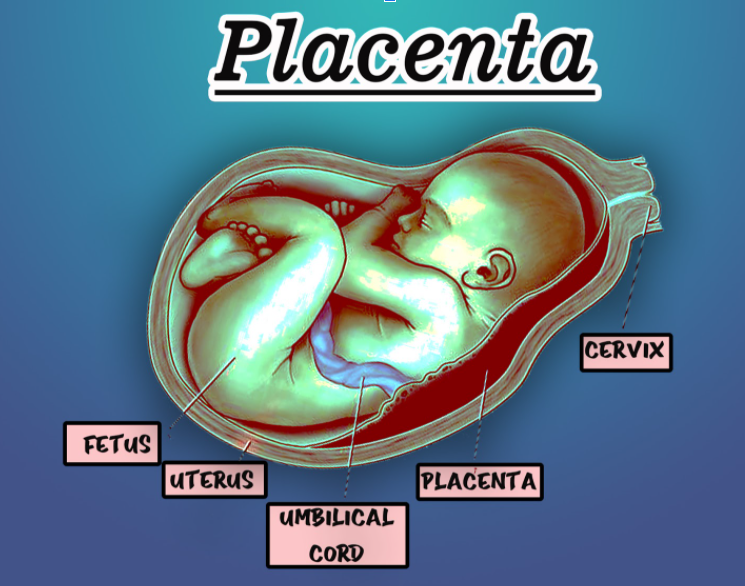Answer
397.2k+ views
Hint: It occurs due to an infected mother to a child most often occurs prenatally, but perinatal and postnatal transmission have been described. In spite of the fact that transmission of syphilis to the baby can happen all through pregnancy. Postnatal transmission from mother to youngster is extremely uncommon.
Complete answer:
Vertical transfer actually means transfer within species. One example transfers from mother to fetus through the placenta, e.g., the transmission of HIV. Transfer across species barriers is called the horizontal transfer.
Additional Information: The uterine–placental interface forms a layer, the placental film (blood placental hindrance) which isolates the fetal blood from the maternal blood. The placental film contains fetal vascular endothelium, animal tissue, trophoblast, and syncytium. The placental layer develops to be more slender as the pregnancy progresses. There are two helpless ways of the irresistible operator from mother to fetus: the fetal membranes which give direct admittance to pathogens rising from the vagina and cervix and fetal villi and the placental intervillous space which allow hematogenous access from maternal blood to fetal blood.
The role of placental cells and therefore the mechanism by which pathogens pass from the maternal to the fetal circulation varies. The placenta provides a barrier that forestalls transmission of some viruses but allows others to succeed in the fetal circulation. Mother to fetus placental transmission of some infections happens through transcytosis across placental cells.
So the correct answer is ‘Placenta of mother’.

Note: Placenta has a fundamental role in the vertical transmission of HIV from the mother to the fetus. The placental structure and execution change all through pregnancy and in this way the separation of trophoblast cells to syncytiotrophoblast produces an obstruction that will shield the embryo from viral diseases.
Complete answer:
Vertical transfer actually means transfer within species. One example transfers from mother to fetus through the placenta, e.g., the transmission of HIV. Transfer across species barriers is called the horizontal transfer.
Additional Information: The uterine–placental interface forms a layer, the placental film (blood placental hindrance) which isolates the fetal blood from the maternal blood. The placental film contains fetal vascular endothelium, animal tissue, trophoblast, and syncytium. The placental layer develops to be more slender as the pregnancy progresses. There are two helpless ways of the irresistible operator from mother to fetus: the fetal membranes which give direct admittance to pathogens rising from the vagina and cervix and fetal villi and the placental intervillous space which allow hematogenous access from maternal blood to fetal blood.
The role of placental cells and therefore the mechanism by which pathogens pass from the maternal to the fetal circulation varies. The placenta provides a barrier that forestalls transmission of some viruses but allows others to succeed in the fetal circulation. Mother to fetus placental transmission of some infections happens through transcytosis across placental cells.
So the correct answer is ‘Placenta of mother’.

Note: Placenta has a fundamental role in the vertical transmission of HIV from the mother to the fetus. The placental structure and execution change all through pregnancy and in this way the separation of trophoblast cells to syncytiotrophoblast produces an obstruction that will shield the embryo from viral diseases.
Recently Updated Pages
How many sigma and pi bonds are present in HCequiv class 11 chemistry CBSE

Why Are Noble Gases NonReactive class 11 chemistry CBSE

Let X and Y be the sets of all positive divisors of class 11 maths CBSE

Let x and y be 2 real numbers which satisfy the equations class 11 maths CBSE

Let x 4log 2sqrt 9k 1 + 7 and y dfrac132log 2sqrt5 class 11 maths CBSE

Let x22ax+b20 and x22bx+a20 be two equations Then the class 11 maths CBSE

Trending doubts
Fill the blanks with the suitable prepositions 1 The class 9 english CBSE

At which age domestication of animals started A Neolithic class 11 social science CBSE

Which are the Top 10 Largest Countries of the World?

Give 10 examples for herbs , shrubs , climbers , creepers

Difference between Prokaryotic cell and Eukaryotic class 11 biology CBSE

Difference Between Plant Cell and Animal Cell

Write a letter to the principal requesting him to grant class 10 english CBSE

Change the following sentences into negative and interrogative class 10 english CBSE

Fill in the blanks A 1 lakh ten thousand B 1 million class 9 maths CBSE



